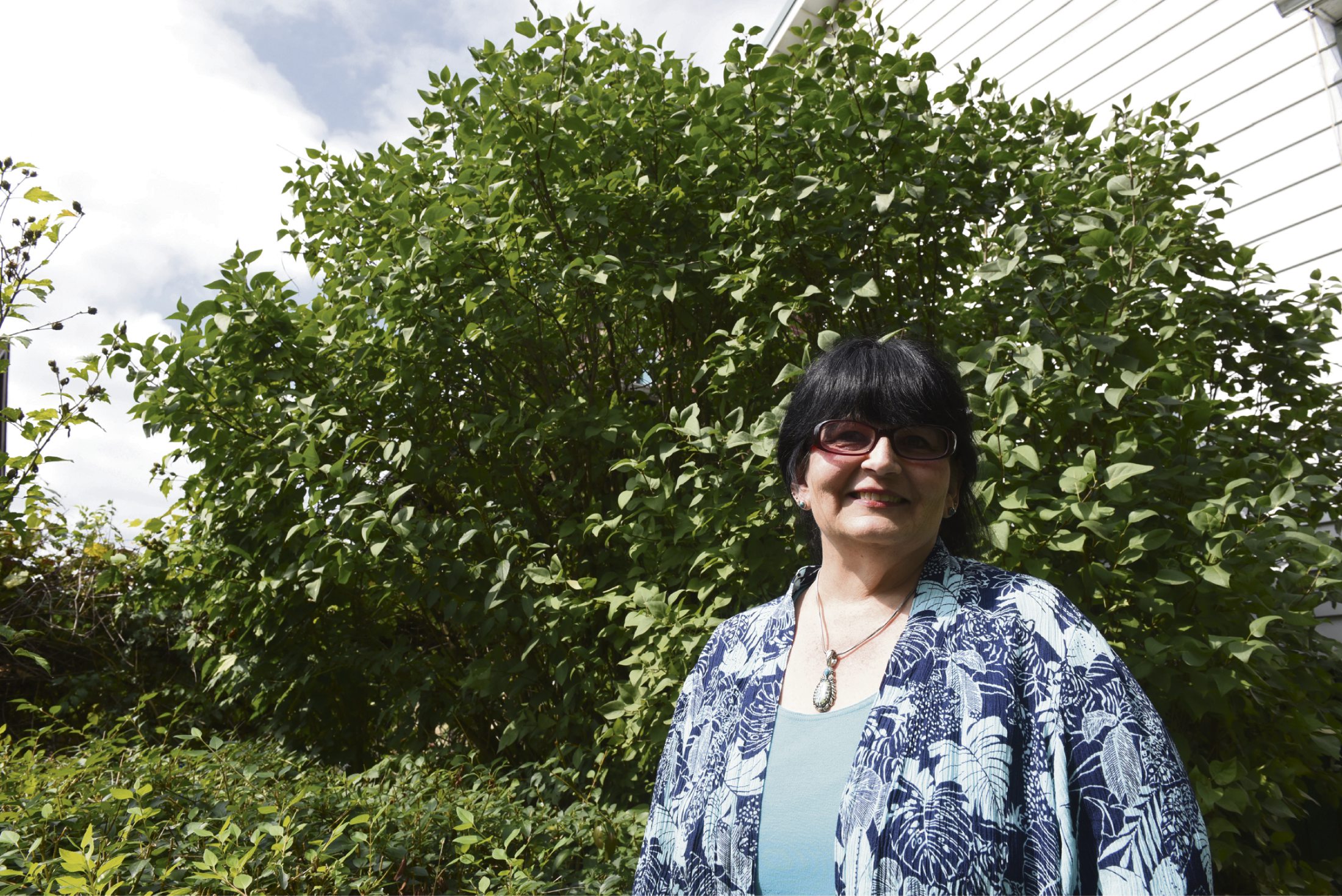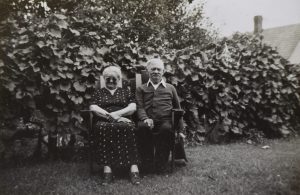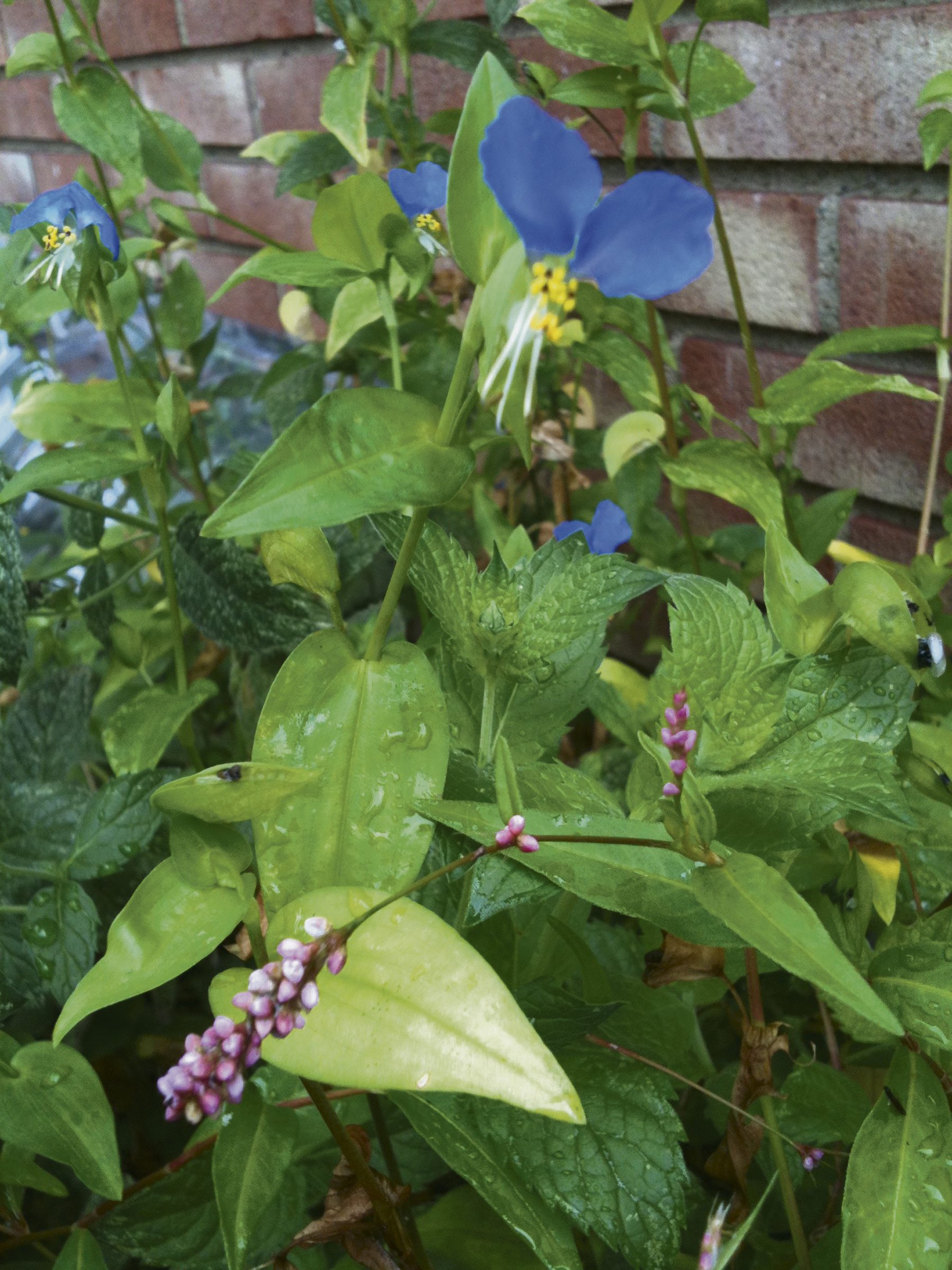Plants That Matter: Tough plants (and weeds) hold memories
Posted on: July 30, 2018 | Written By: Doug Oster |
,Note: Doug Oster’s “Plants That Matter” series won the Gold Medal award at the 2017 Association of Garden Communicators Media Awards. They now run on Everybody Gardens as they originally appeared in the Tribune-Review. This is the third of three in the series.

Gina and Tamer Ziady of Wexford show off a very special plant that was cared for and given back to them on their second anniversary by their close friend Christina French.
Tamer and Gina Ziady are sitting at either end of their dining room table in Wexford talking about a little succulent plant that has become quite meaningful in their lives.
In September of 2016, the couple had been married two-and-a-half years and it showed.
As Gina talks about how they started dating, she says, “He’s got a magnetic personality,” and her husband blows her a kiss and mouths, “I love you.”

This succulent plant was given to Christina French at a bridal shower for Gina Ziady.
The story of the plant though begins at Gina’s bridal shower, where she used it as an unusual parting gift for guests.
“I wanted something symbolic and meaningful with regard to our relationship and also reflected something of me, in that I don’t do well with plants,” she happily admits.
It also symbolizes something about Tamer — “his strength and his ability to survive,” Gina says.
Tamer was born with kidney disease, and his mother was told he wouldn’t make it longer than seven days — 42 years and five kidney transplants later, he has proved the doctors wrong. Gina wanted that tough succulent to send a message about Tamer to everyone she knew.
“It’s a plant I enjoy and love that goes well with me, as he goes well with me,” she says with a little laugh. “I hoped everyone would keep it, and when they looked at it, remember us.”
Tamer’s friend Christina French, who was at the bridal shower, realized quickly the significance of the little plants Gina gave away.
“She wanted the plant to represent Tamer and his perseverance and his ability to survive on very little,” French says.
She took it upon herself to grow out the little plant, with help from friend Gary Pletsch from Penn Avenue Pottery, who provided advice and created a custom-made pot for the succulent.
French decided that on the couple’s second anniversary, she would gift it back to them.
“Watching their marriage grow and really becoming something extraordinary, their own perseverance started taking on the form of what I saw the plant representing,” she says.
At a party in the spring, celebrating her 40th birthday and the couple’s anniversary, French gave the plant back to them.
“I was very surprised that she still had it,” Tamer says. “(French) had moved several times. That made me very happy and very proud that she always remembers us, a beautiful gesture.”
“It was like full circle,” Gina says. “It came back to us and that was very special.”
In August, Tamer went in for another kidney transplant and had other medical issues through early September. The little plant didn’t get the care it needed, but it survived.
“It’s like him,” Gina says, looking at her husband across the table. “It just keeps going. Having it around brings a moment to stop and take notice and take a breath from our busy lives.”
• • •

Paula Curtis of West Tarentum stands in front of a lilac planted by her grandparents in 1910. She never knew them, but the shrub is a connection to her grandparents, especially when it blooms.
Lilacs watching over you
Paula Curtis has seen lots of changes in her West Tarentum neighborhood, particularly the closing of St. Clement Church and School right across the street. Her grandfather, Anthony Killian, was one of the founders of the parish.
One thing that hasn’t changed, though, are some of the plantings in her backyard.

Paula Curtis of West Tarentum cares for a lilac planted in 1910 by her grandparents, Theresa and Anthony Killian, who are pictured here.
The house was built in 1910 for her grandparents, and that same year, they planted a lilac along with a grapevine. They didn’t live to meet their granddaughter.
“When I was growing up as a little girl, every time the scent of lilac would appear, my mother would say, ‘Grandma’s watching over us,’” Curtis says, while sitting on her front porch.
“It’s like having a little piece of somebody I didn’t know, that I know an awful lot about.”
The purple blossoms have returned year after year, even after her father severely hacked the plant back, making her mother furious. “She nearly killed him for cutting it down,” Curtis says laughing. “She thought it wouldn’t come back.”
Curtis has lived here her whole life, only leaving to go to college and when she traveled the world. The church across the street is where she was baptized, made Communion and was confirmed. Through all those years, the lilac has persevered.
“Just fond memories — the smell, the fragrance of it makes you remember certain things about times in your life,” she says. “I remember having fresh-cut lilacs in the house. I’ll bring some in usually when they bloom in the spring.”
She says that around her mother’s birthday in December, “there will be a scent of lilac. It’s the same thing — ‘Oh she’s watching over me, she’s thinking of me.’”
Her eclectic garden is filled with sedum, ground-hugging garden statuary, such as an orange turtle, and lots of wind chimes, which she says are one of her obsessions. The former teacher has lots of other things planted here that remind her of another time, too.
“Just about every kid I had in school has something growing in my yard,” she says with a smile. There are tulips, daffodils, lilies and more.
• • •

Rose Ryan-Douglas saved these weeds from near her childhood home after her parents died. The blue and yellow bloom is common dayflower; the pink flower is smartweed.
Saving the weeds
Growing up in New Kensington, Rose Ryan-Douglas of Shaler spent long summer days playing in a field of weeds that grew in an empty lot across the street from the family home. Her mother and father were both great gardeners. Her dad, Adam Rymarz, handled the vegetable garden and her mom, Lottie, cared for the flowers.
“I just always think back to the times that she would plant them and take care of them,” Ryan-Douglas says with a smile. “I’m trying to keep as many of them alive as I can.”
After her mother died in 2008, Ryan-Douglas spent the next couple years transplanting brown-eyed Susans, coneflower, sedum and other plants from her mom’s garden.
“They were all green and healthy — most of them made it,” she says proudly. “We lived in the same house the whole time I was growing up. It reminds me of her primarily, but of my childhood, too.”
She collected some of the weeds that grew mostly across the street and in her mother’s garden until they were judiciously removed. Spiderwort was one of the first to be collected.
“There are about a foot tall. They’re deep purple, and when you touch them, it’s like ink on your hands,” she says. “They are really pretty little flowers. I also have, I guess they are dayflowers; they are light blue with a yellow center.”
Smartweed, with its little pink spiky stems covered in seedlike flowers, were also transplanted.
“They are so pretty,” she says. “That’s why I took them, and I’ve kept them from being weeded by other people in my house.”
She also made sure to get some Queen Anne’s lace. “My mom pressed those to make bookmarks, along with violas and other smaller flowers,” she says.
“I don’t look at them as weeds,” she says. “I look at them as pretty flowers, and they remind me of my childhood.”
Plants That Matter Series
Part 1: 3 Trees With Special Meanings For Western Pennsylvania Families
Part 2: 90-year-old fern thrives; memorial garden brings peace
More from Everybody Gardens
See also, Library Garden Teaches Children About Nature And Much More
Follow us on Facebook.